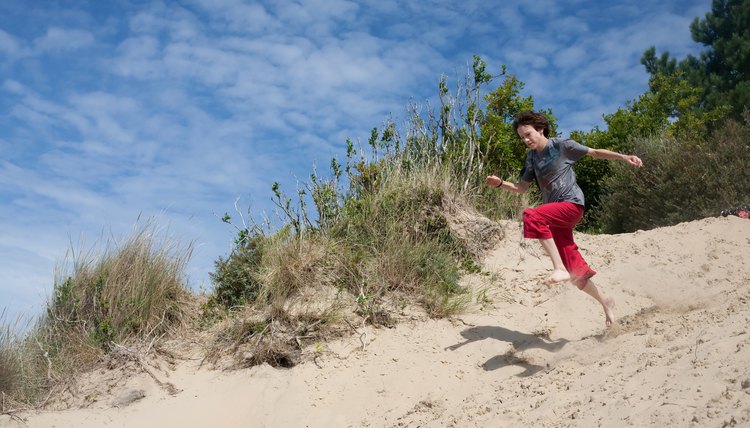What does fact checked mean?
At SportsRec, we strive to deliver objective content that is accurate and up-to-date. Our team periodically reviews articles in order to ensure content quality. The sources cited below consist of evidence from peer-reviewed journals, prominent medical organizations, academic associations, and government data.
- “International Journal of Sports Physiology and Performance”; The Optimal Downhill Slope for Acute Overspeed Running; W.P. Ebben; March 2008
- “International Journal of Sports Physiology and Performance”; The Optimal Downhill Slope for Acute Overspeed Running; W.P. Ebben; March 2008
- “Journal of Strength and Conditioning Research”; The Effects of Sprint Running Training on Sloping Surfaces; G.P. Paradisis, et al.; November 2006
- “Journal of Strength and Conditioning Research”; The Effects of Sprint Running Training on Sloping Surfaces; G.P. Paradisis, et al.; November 2006
The information contained on this site is for informational purposes only, and should not be used as a substitute for the advice of a professional health care provider. Please check with the appropriate physician regarding health questions and concerns. Although we strive to deliver accurate and up-to-date information, no guarantee to that effect is made.
Does Downhill Sprinting Make You Run Faster?

You might think the most effective way to train to sprint faster is to run uphill. Running uphill taxes your muscles more than running on a flat surface, so they grow stronger in response to the regular, vigorous exercise. But a more effective way to increase your running speed is to train on a downhill slope.
Problem
The problem with uphill training is that it strengthens your muscles, but it doesn’t do much for your coordination. Running fast isn’t only about leg power. You also need to have quick steps, or a fast stride rate. If you’ve ever tried to travel down a steep slope, you’ve probably noticed how difficult it is to move quickly without losing your balance. That’s because your legs can’t handle the fast stride rate.
Solution
Sprinting downhill develops your coordination by forcing your legs to learn how to handle high-speed travel. At first, you’ll have difficulty keeping your balance, but over time your coordination will improve in response to the increased stride rate. Consequently, your running speed on horizontal surfaces will increase because your peak stride rate will be more rapid.
Slope
The question of what degree slope you should use for your downhill training isn’t settled. A slope of 5.8 degrees and a total running distance of 40 yards might be optimal, according to a study that appeared in the March 2006 issue of the “International Journal of Sports Physiology and Performance.” The author of the study says the prevailing recommendation that calls for a slope of 3 degrees might not be as effective. For beginners, the most effective approach might be to find a slope gentle enough to force you to exceed your normal stride rate but not so steep that you pitch forward and risk injury.
Effect
Another study found that a combination of uphill and downhill training is the most effective way to improve running speed, according to a November 2006 issue of the “Journal of Strength and Conditioning Research.” The researchers found that after six weeks of training, participants who performed a combination of uphill and downhill training improved their running speed by 3.5 percent, while those who participated in downhill training alone improved their running speed by only 1.1 percent. The authors conclude that the combination of training types might be “significantly more effective” than either one alone.
References
- “BTEC National Sport: Sports Development and Fitness Options”; Ray Barker; 2004 (153)
- “International Journal of Sports Physiology and Performance”; The Optimal Downhill Slope for Acute Overspeed Running; W.P. Ebben; March 2008
- “Journal of Strength and Conditioning Research”; The Effects of Sprint Running Training on Sloping Surfaces; G.P. Paradisis, et al.; November 2006
Writer Bio
Stan Mack is a business writer specializing in finance, business ethics and human resources. His work has appeared in the online editions of the "Houston Chronicle" and "USA Today," among other outlets. Mack studied philosophy and economics at the University of Memphis.
